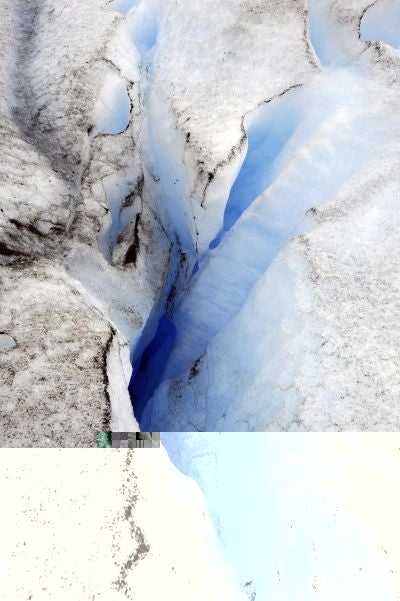In new row, UN climate body to probe Himalayan glacier forecast

Your support helps us to tell the story
From reproductive rights to climate change to Big Tech, The Independent is on the ground when the story is developing. Whether it's investigating the financials of Elon Musk's pro-Trump PAC or producing our latest documentary, 'The A Word', which shines a light on the American women fighting for reproductive rights, we know how important it is to parse out the facts from the messaging.
At such a critical moment in US history, we need reporters on the ground. Your donation allows us to keep sending journalists to speak to both sides of the story.
The Independent is trusted by Americans across the entire political spectrum. And unlike many other quality news outlets, we choose not to lock Americans out of our reporting and analysis with paywalls. We believe quality journalism should be available to everyone, paid for by those who can afford it.
Your support makes all the difference.The UN's panel of climate scientists said on Monday it would probe claims its doomsday prediction for the disappearance of Himalayan glaciers was wrong as an expert said he had warned of the mistake.
The Nobel-winning Intergovernmental Panel on Climate Change (IPCC) is already under attack over hacked email exchanges which skeptics say reflected attempts to skew the evidence for global warming.
The new controversy focusses on a reference in the IPCC's landmark Fourth Assessment Report in 2007 that said the probability of glaciers in the Himalayas "disappearing by the year 2035 and perhaps sooner is very high."
At the weekend, Britain's Sunday Times newspaper reported that this reference came from the green campaign group WWF, which in turn took it from an interview given by an Indian glaciologist to New Scientist magazine in 1999.
There is no evidence that the claim was published in a peer-reviewed journal, a cornerstone of scientific credibility, it said.
"We will take a view of this," the IPCC's chairman Rajendra Pachauri said in comments broadcast on the CNN-IBN network, while the Hindustan Times also quoted Pachauri as saying: "We are studying the new evidence."
In an interview with AFP, a leading glaciologist who contributed to the Fourth Assessment Report described the mistake as huge and said he had notified his colleagues of it in late 2006, months before publication.
Loss of the Himalayan glaciers by 2035 would take two or three times the highest expected rate of global warming, said Georg Kaser of the Geography Institute at Austria's University of Innsbruck.
"This number is not just a little bit wrong, but far out of any order of magnitude. It is as wrong as can be wrong.
"To get this outcome, you would have to increase the ablation [ice loss] by 20 fold. You would have to raise temperatures by at least 12 degrees" Celsius, or 21.6 degrees Fahrenheit.
"It is so wrong that it is not even worth discussing... I pointed it out."
Asked why his warning had not been heeded, Kaser pointed to "a kind of amateurism" among experts from the region who were in charge of the chapter on climate impacts, where the reference appeared.
"They might have been good hydrologists or botanists, but they were without any knowledge in glaciology," he said.
The Fourth Assessment Report said that the evidence for global warming was now "unequivocal," that the chief source for it was man-made and that there were already signs of climate change, of which glacial melt was one.
The massive publication had the effect of a political thunderclap, triggering promises to curb greenhouse gases that had stoked the problem.
Kaser said the core evidence of the Fourth Assessment Report remained incontrovertible.
"I am careful in saying this, because immediately people will again engage in IPCC bashing, which would be wrong," he said.
But he acknowledged that the process of peer review, scrutiny and challenge which underpin the IPCC's reputation had "entirely failed" when it came specifically to the 2035 figure.
The 2035 reference appeared in the second volume of the Fourth Assessment Report, a tome published in April 2007 that focussed on the impacts of climate change, especially on human communities.
Part of the problem, said Kaser, was "everyone was focussed" on the first volume, published in February 2007, which detailed the physical science for climate change.
Work on this volume was "much more attractive to the community" of glaciologists, and they had failed to pick up on the mistake that appeared in the second, he said.
The question of glacial melt is a vital one for South Asia, as it touches on flooding or water stress with the potential to affect hundreds of millions of lives.
Indian Environment Minister Jairam Ramesh has repeatedly challenged the IPCC's claims.
The IPCC came under ferocious attack from climate skeptics last month ahead of the UN conference in Copenhagen.
Emails from scientists at Britain's University of East Anglia, a top centre for climate research, were leaked and seized upon as evidence that experts twisted data in order to dramatise global warming.
Some of the thousands of messages expressed frustration at the scientists' inability to explain what they described as a temporary slowdown in warming. Pachauri has vowed to investigate the affair.
Join our commenting forum
Join thought-provoking conversations, follow other Independent readers and see their replies
Comments